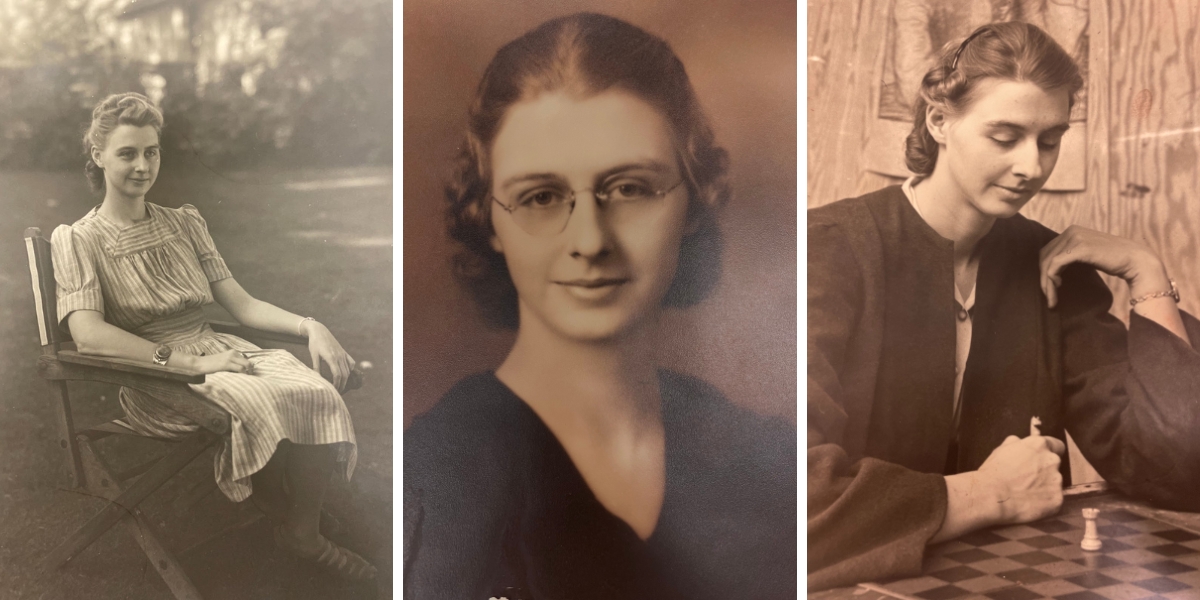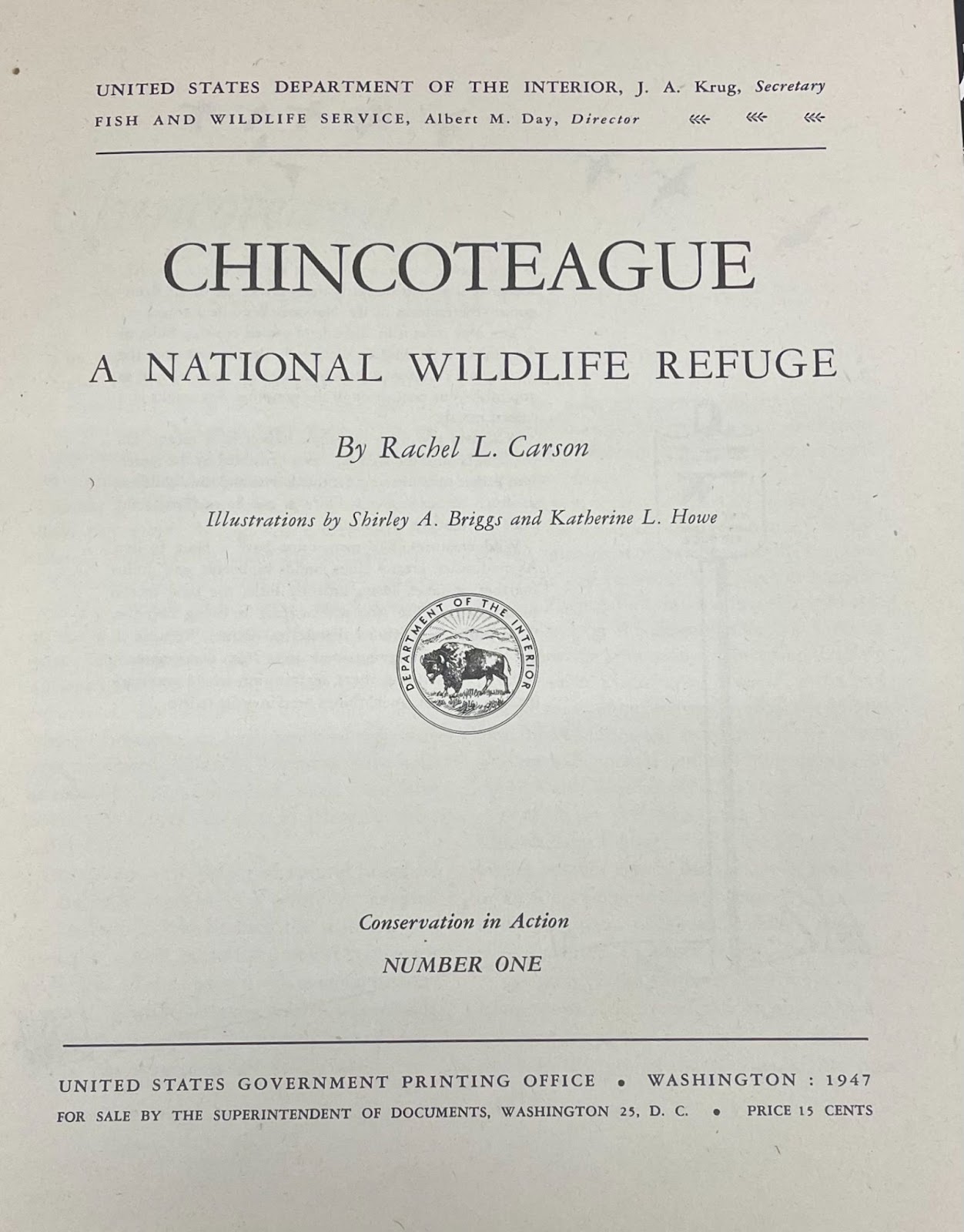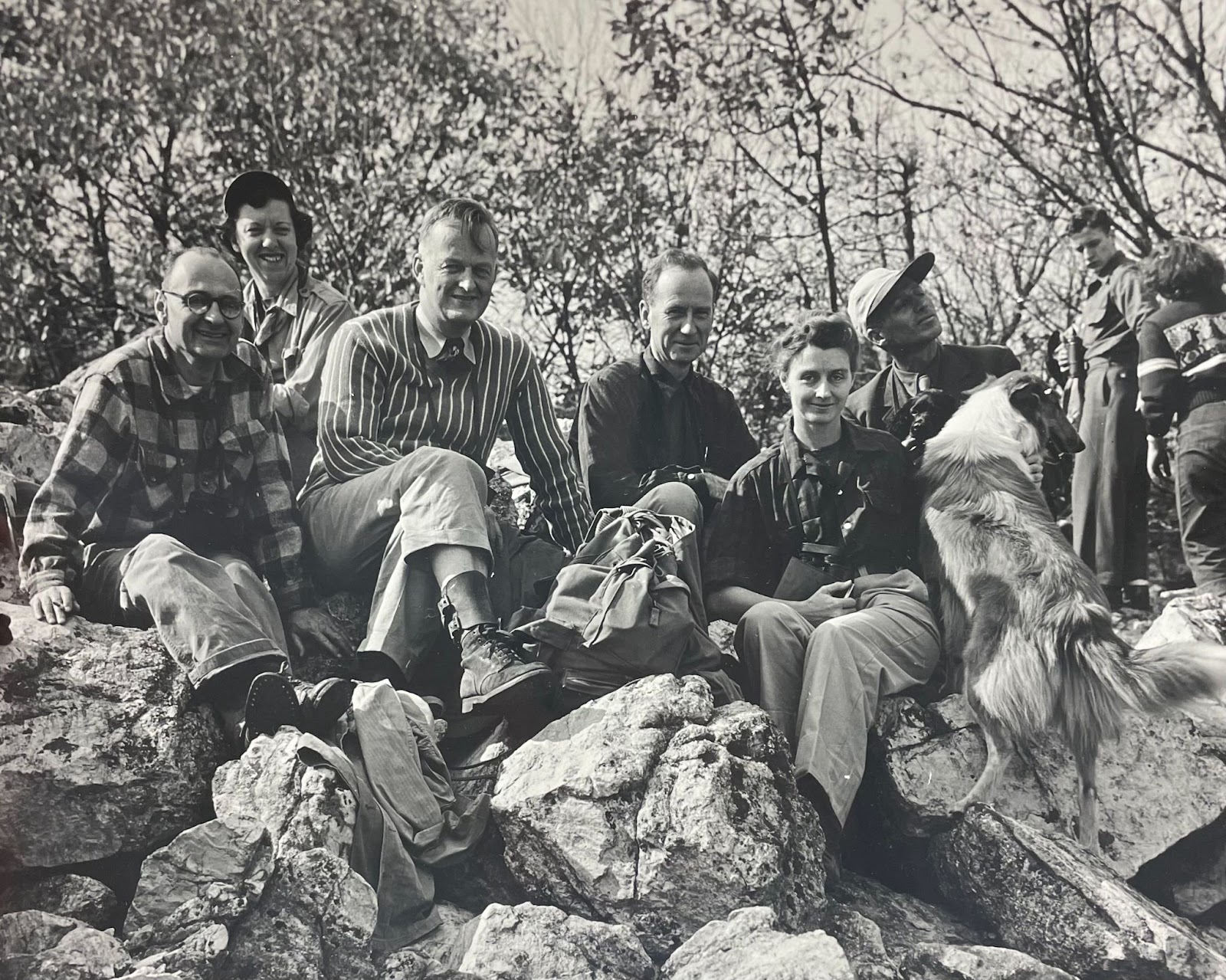College of Liberal Arts & Sciences
Shirley Briggs and Rachel Carson: A University of Iowa Connection

Story: Ashton Knatz
The Office of Sustainability and the Environment is celebrating Women’s History Month by honoring women who have made contributions to the environmental movement and sustainability. One of the most enduring and prevalent figures in the environmental movement is Rachel Carson. Her work as a nature writer is credited with advancing the global environmental movement, particularly her 1962 book Silent Spring, which led to a nationwide ban on the pesticide DDT in the United States. One of Carson’s closest confidants and fellow advocates was Shirley Briggs, an alumnus of the University of Iowa. Briggs met Carson when they worked together in the U.S. Fish and Wildlife Service in the 1940’s, and the two became close friends. After Carson’s death in 1964, Briggs carried her momentum forward through her own work. Briggs’ legacy still lives on today through her archived work within the university libraries. The impact that Shirley Briggs had on the environmental movement cannot be underestimated, and it is important that we continue to carry her own legacy forward. This package of articles outlines Briggs' life, achievements, and friendship with Rachel Carson, as well as ways to learn more about this connection.
Sincerely Yours, Shirley Briggs: A Glimpse into Her Life
Shirley Briggs was born in Iowa City, Iowa on May 12, 1918. She graduated from University High School in Iowa City and later received both her undergraduate and master's degrees from the University of Iowa. In 1939, she earned a B.A. in Art, Art History, and Botany, and went on to earn a M.A. in Art and Art History in 1940, graduating summa cum laude. Her father, John Briggs, was a professor of political science at Iowa, and her educational experience was unrivaled during her time at the university. Briggs also studied under Grant Wood, perhaps best known for his painting American Gothic, while attending the University of Iowa.
A photo of Briggs working on a sculpture, likely taken sometime in the late 1930's - early 1940's. Original photographer unknown. Image sourced from the Iowa Women's Archives.
After graduation, Briggs began teaching art at the North Dakota Agricultural College from 1941-1943, but decided to change professions after many of her students were drafted into World War II. She moved to Baltimore, Maryland to work as a professional illustrator and painter with the Glenn L. Martin Company, primarily drawing pictures of airplanes for mechanics to reference. In 1945, she went to Washington, D.C. to work as an information specialist and professional illustrator for the U.S. Fish and Wildlife Service, where she worked for two years. It was there that she met Rachel Carson, and the two found that they shared many similar interests. The two quickly became friends.
Briggs continued her work as a professional illustrator with the U.S. Bureau of Reclamation and the Smithsonian Institution’s Museum of Natural History well into the 1950’s. She worked on graphics and dioramas for a number of uses, including informational pamphlets and museum exhibits.
The background of this Pronghorn Antelope diorama was painted by Briggs. The diorama was presented through the Smithsonian Institution. Image sourced from the Iowa Women's Archives.
While working for the federal government, Briggs was also involved with the Audubon Naturalist Society and took several trips with Carson. Briggs’ work with the Audubon Society included writing, photography, and illustrating for magazines and periodicals.

Samples from the informational pamphlet "Chincoteague: A National Wildlife Refuge," written by Carson. Briggs provided some of the illustrations in this pamphlet, including the image on the right. Sourced from the Iowa Women's Archives, but the pamphlet was originally from the U.S. Fish and Wildlife Service, 1947.
After Carson’s death in 1964, Briggs worked with other fellow conservationists to establish the Rachel Carson Council in 1965. Within this organization, she served as the executive director from 1970 to 1992. Briggs also made efforts to preserve Carson’s legacy through Silent Spring and her other works.
Shirley Briggs was awarded the Distinguished Alumni Award from the University of Iowa in 1995, as well as a number of other awards from notable organizations, including the University of California and the Environmental Protection Agency. Briggs later passed away at her home in 2004, but her legacy continues to live on today. Her work with the U.S. Fish and Wildlife Service, Audubon Naturalist Society, and the Rachel Carson Council set the standard for fellow conservationists. The efforts of Shirley Briggs in conjunction with Rachel Carson spurred the environmental movement in the United States and all over the world.
As Ever, Ray: The Friendship Between Briggs and Carson
Rachel Carson worked closely with many female conservationists and researchers throughout her life. One of these conservationists was Shirley Briggs, a University of Iowa alumnus. The two met each other while working in the U.S. Fish and Wildlife Service in the 1940’s, and they discovered a shared interest in birding. While working for the Department of the Interior, the two women joined the Audubon Naturalist Society. Briggs and Carson took many trips all over the United States through the Audubon Society, including Ocean City, Maryland, and Cobb Island, Virginia, as well as a group trip to Hawk Mountain.

Left: Briggs and the Hawk Mountain expedition group. Briggs is seated to the immediate left of the dog. Original photographer unknown. Right: Rachel Carson at Hawk Mountain. Original photographer unknown, but likely Briggs. Both photos were sourced from the Iowa Women's Archives.
Briggs collaborated with Carson to conduct research for the latter’s magnum opus Silent Spring, which was released in 1962. Carson was suffering from respiratory cancer while working on Silent Spring, and Briggs was one of the few people that knew how ill she was. Because of this, Briggs made significant efforts to preserve Carson’s legacy after her death in 1964, just two years after Silent Spring was published. Briggs wrote several papers following the publication of Silent Spring to discuss Carson’s research and impact on the environmental movement. The Rachel Carson Council was established in 1965, and Briggs served as executive director for over twenty years for no pay. The two engaged in letter correspondence throughout their friendship, and Shirley frequently referred to Rachel as “Ray.”

A sample of letter correspondence between Briggs and Carson (written by the latter) from 1947. Sourced from the Iowa Women's Archives.
The enduring legacy of Rachel Carson is frequently discussed in environmental literature, but her impact would not have been possible without the dedication of Shirley Briggs. Briggs dedicated the rest of her life to preserving Carson’s legacy through her work, which helped continue the environmental movement through the 1990’s. The collaboration of Shirley Briggs and Rachel Carson has had a tremendous impact on the University of Iowa and the entire United States as a whole.
Briggs' Work: A Basic Guide to Pesticides
While working with the Rachel Carson Council, Shirley Briggs began compiling information about pesticides and their effects on human and environmental health to publish in her own work. The efforts of Briggs and fellow Council members culminated in the book A Basic Guide to Pesticides: Their Characteristics and Hazards, which was published in 1992. The volume provides information about the physical and chemical characteristics of over 700 pesticides, as well as their toxic effects on human and environmental health. Briggs received the Robert Van den Bosch Award from the University of California for this work, as well as the Rachel Carson Award from the Environmental Protection Agency.
Image sourced from www.amazon.com. A Basic Guide to Pesticides may be available electronically through the University of Iowa Libraries, as well as for purchase on Amazon.
Shirley Briggs and the Rachel Carson Council
A statement from the Rachel Carson Council's website reads: “We promote Carson’s ecological ethic that combines scientific concern for the environment and human health with a sense of wonder and reverence for all forms of life in order to build a sustainable, just, and peaceful future.”
After Rachel Carson’s death in 1964, Shirley Briggs worked to preserve her legacy through the establishment of the Rachel Carson Council. Briggs was a founding member with several other conservationists, and she served as executive director from 1970 to 1992. During her tenure as executive director, Briggs edited and published several articles that followed up on Carson’s 1962 book Silent Spring, including “Silent Spring: The View From 1990,” which discussed Carson’s impact and the efforts of the Environmental Protection Agency in developing the environmental movement in the United States.
Image sourced from www.rachelcarsoncouncil.org.
Today, the Rachel Carson Council works to connect social and environmental issues by building links between environmental organizing, advocacy, and the climate movement. The Council also advocates for the creation of careers in clean energy and sustainable agriculture. The Council also builds connections between college campuses all over the United States through the Rachel Carson Campus Network.
The Council is currently accepting applications for the RCC Fellowship Program, which provides training for motivated students in Washington, D.C. to learn more about environmental education and advocacy. RCC Fellows work with RCC staff during a summer intensive to develop a campaign targeted towards an environmental issue on their campus. The Fellows work with RCC staff throughout the academic year to implement their ideas and make a difference on their campus.
Image sourced from www.rachelcarsoncouncil.org.
Motivated college students are invited to apply for the RCC Fellowship Program. If you are interested in applying, please visit this link: Rachel Carson Council Fellowship 2023-2024 - Rachel Carson Council (workable.com). For more information on the Rachel Carson Council, please visit www.rachelcarsoncouncil.org.
"After Silent Spring..." Further Reading
"Conservation is a cause that has no end. There is no point at which we will say our work is finished.”
Much of Briggs’ art, writing, and photos are housed at the University of Iowa’s Women’s Archives through the university libraries. Most of the photos used in this package were sourced from this collection. If you are interested in browsing more of the Shirley Briggs archives and learning more about this remarkable woman, we encourage you to visit the Iowa Women’s Archives, located on the third floor of the Main Library. The Iowa Women’s Archives is open from 9 AM to 4 PM Tuesday through Friday, and on Mondays by appointment.
The information in these articles was sourced from the following pages:
1. "Shirley Briggs." Wikipedia, Wikimedia Foundation, 10 Mar. 2022, en.wikipedia.org/wiki/Shirley_Briggs. Accessed 7 Mar. 2023.
2. "My Friend, Rachel Carson: Shirley Briggs and the Iowa Connection to "Silent Spring"." University of Iowa Libraries, 16 Oct. 2018, guides.lib.uiowa.edu/c.php?g=132212&p=864674. Accessed 1 Mar. 2023.
3. Images and artwork sourced from the Iowa Women's Archives: Shirley Briggs papers, Iowa Women’s Archives, University of Iowa Libraries, Iowa City, Iowa.
Thank you to the Iowa Women's Archives for your help in locating artifacts from the Shirley Briggs collection for this story!